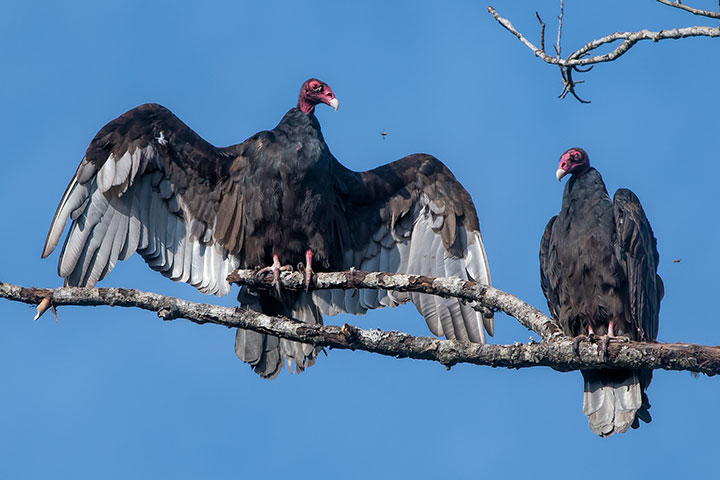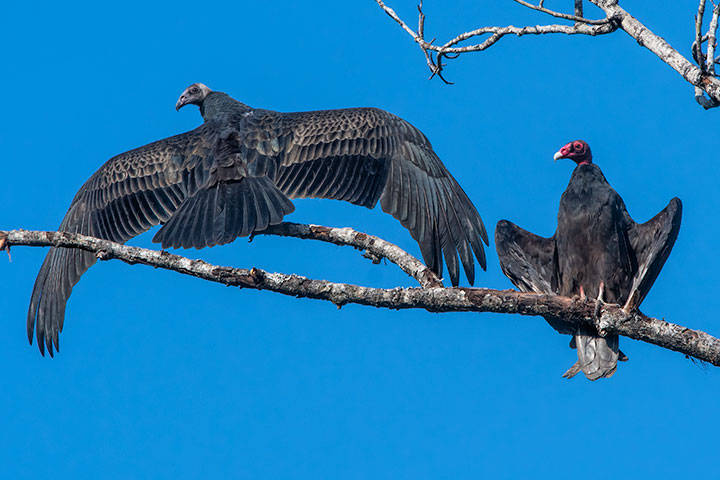If one wants to watch vultures, a good tactic is to hang out in the vicinity of carrion (sigh).
For most of us, finding carrion before a vulture does is not easy — except possibly during a seasonal die-off, such as what happens with spawning Kokanee. The carcasses of spent fish attract bears and birds for weeks on end.
However, merely spotting vultures does not guarantee that they will be seen in their horaltic pose, and that is what I set out to see. The horaltic pose of vultures (and a very few other large birds) involves perching in the sunlight with spectacularly spread wings. There are questions about this pose, none of which is easy to answer.
• Why do vultures do this? Speculations are that the pose might facilitate: drying the wings, raising the temperature of the bird after a cold night, baking parasites. At one time or another, the purpose probably involves any of the three reasons.
• Why is the pose given the odd designaton, horaltic? The etymology of the name is obscure, although I suspect that it refers to the Egyptian god, Horus, which is sometimes represented by spread wings.
• Why did I want to see it? Well, it is an unusual pose for any bird and a spectacular one at that. It is certainly worth seeing.
I finally learned when and where to look in the trees above a local spawning creek.
A hint as to forthcoming vulture scavenging is the sighting of a kettle of vultures.

The dorsal surface of the Turkey Vulture looks black from a distance, but is actually a deep brown. Along with that, the adult vulture’s head is red and its hooked bill is ivory.

The underside of the vulture’s flight feathers are light, making the ventral surface two toned.

A Turkey Vulture strikes a horaltic pose as it rests on the branch of a red cedar. It is early morning, and this pose seems to be struck to warm the bird with the first rays of sunlight following a cool night.

Sometimes the brownish dorsal surface of the wings is exposed, sometimes the two-toned ventral surface is exposed.

Here a juvenile vulture (grey head) warms its dorsal surface, while an adult (red head) exposes its ventral surface in a somewhat different stance. The adult’s pose is reminiscent of that of a heron, which sometimes uses this stance to raise wing temperature so as to allow sunlight to kill its parasites. Indeed, the adult vulture on the right was seen to be picking things out of its feathers.

An adult Turkey Vulture faces the sun and adopts a pose apparently used to cook its parasites.


About the only viewing of TV’s for the large majority of us is from below, noting the uptilt of the wings on high. That you know all this is mind-boggling for those who faithfully follow your blogs. And where else would we be so well educated?
Margo, for the longest time I was only able to see, and photograph, the Turkey Vulture from below as it was soaring.